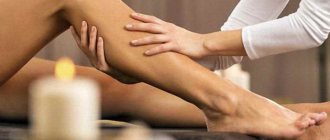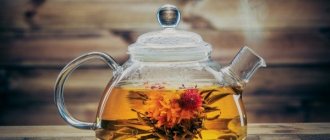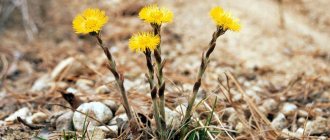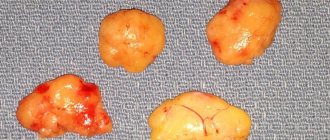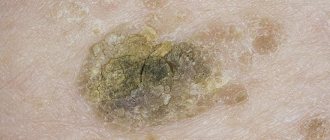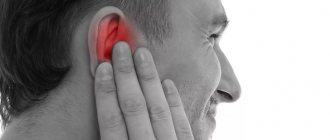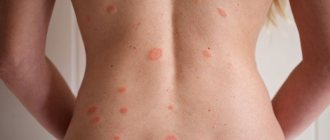Escherichia coli is considered one of the most common bacteria. Its habitat is the intestines of humans and some animals. It is believed that after entering the environment (the bacterium is excreted from the body along with feces), it can maintain its viability for a long period even under the influence of external factors.
Bacteria of the genus Escherichia coli can be both safe for the human body and pathogenic, capable of leading to the development of numerous diseases. These pathologies are characterized by their own pronounced symptoms. When they appear, a person must urgently contact a medical facility, otherwise the illness caused by the pathogen can lead to the development of serious complications that are life-threatening for the person.
Characteristics of the microorganism
Escherichia coli is a bacterium of the genus Escherichia from the Enterobacteriaceae family. This microorganism actively multiplies in the human body, in particular, in various parts of the intestine. When released into the environment with feces, the bacterium can remain viable for several months. Active microflora is found in water, soil, feces, and also in some food products (especially milk and meat).
E. coli is usually divided into non-pathogenic and pathogenic. Representatives of normal microflora living in the intestines have a number of beneficial effects for the body. First of all, these microorganisms normalize the intestinal microflora, suppressing the growth of harmful bacteria. In addition, they synthesize vitamin K, which is necessary to maintain normal blood clotting and perform other important functions in the body.
Some of the representatives of this species are capable of secreting enzymes that break down lactose. However, these bacteria remain safe only when they are in the intestinal cavity. When penetrating other organs, non-pathogenic microflora can provoke the development of inflammation.
Expert opinion
Shoshorin Yuri
General practitioner, site expert
When pathogenic Escherichia coli penetrates the intestines, various diseases develop in the human body, affecting not only the digestive tract, but also the organs of the urinary and reproductive systems.
The best folk recipes for E. coli
Our intestines are inhabited by numerous bacteria, which usually belong to its natural microflora.
However, if the balance of microorganisms is disturbed, pathogenic microorganisms may begin to multiply, causing the development of serious intestinal diseases, such as dysbiosis, colitis, enterocolitis. You can never tell for sure whether food is contaminated with bacteria. This cannot be determined either by its appearance or taste.
And while most types of E. coli bacteria are harmless, some strains can lead to serious eating disorders.
To protect yourself from gastrointestinal diseases at home, you must follow the basic principles of safety and hygiene.
Measures to prevent infection
- Wash raw vegetables thoroughly and scald fruits with boiling water.
- Wash your hands, utensils and kitchen surfaces with hot, soapy water before and after preparing or eating food.
- Keep raw foods, especially meats, separate from ready-to-eat foods.
- Prepare food thoroughly. Beef, pork, lamb and veal steaks, chops, and roasts should be cooked to an internal temperature of 63 degrees Celsius. Ground meats other than poultry must be cooked to at least 71 degrees Celsius. Poultry should be cooked at 74 degrees Celsius.
- Freeze perishable foods.
- Avoid consuming unpasteurized juices and dairy products.
- Do not drink raw water from wells, lakes or streams.
Signs and symptoms of E. coli infection
Signs and symptoms of E. coli infection usually begin three or four days after exposure to the bacteria, although you can get sick in as little as a day or more than a week. It all depends on your immunity. Signs and symptoms include:
- diarrhea, which can range from mild and watery to severe and bloody;
- cramping abdominal pain;
- nausea and vomiting in some people;
- loss of appetite;
- bloating;
- weakness and elevated body temperature.
Causes of intestinal infections
The cause of the disease, as a rule, is a weakened immune system, poor personal hygiene, consumption of poor quality or dirty products, and taking antibiotics. In the fight against pathogenic E. coli, antibiotics are used, which are prescribed after a special laboratory test.
But there are also folk remedies that will help restore microflora, digestion, stool and appetite, reduce the aggressive activity of pathogenic microorganisms, relieve inflammation, bloating and abdominal pain. Useful material: Restoring balance in the intestines. Folk remedies for dysbiosis.
E. coli is classified as an opportunistic microflora, which means the following: when your immune system is working at full strength, and the intestines are populated predominantly by beneficial bacteria, this microorganism does not have a harmful effect. As soon as the immune system fails or the intestines lose some of their “defenders,” E. coli begins to actively multiply, contributing to the occurrence of dyspeptic disorders.
To prevent such developments, you should normalize your diet (eat vegetables, fruits, berries, dairy products) and follow the rules of food preparation (wash all work surfaces with hot water and detergent, and food under warm running water). If you experience the first signs of indigestion, go to the hospital immediately.
Traditional medicine recipes and folk remedies
Let's move on to a direct acquaintance with the natural recipes of our grandmothers.
Recipe No. 1. For a long time they have been fighting E. coli with the help of a folk remedy made from Jerusalem artichoke. We took 250 grams of peeled tubers and cut them into small pieces.
Next, 200 ml of milk and the same amount of water were poured into the pan, the mixture was brought to a boil and the root vegetables were thrown into it. Cooked them until soft.
Then the liquid was poured into another bowl and, adding one tablespoon of flour and a little butter, stirring, the mixture was cooked further to make it thicker.
Having received a kind of sauce, they poured Jerusalem artichoke over it and sprinkled it with herbs, if desired. By eating this food every day for breakfast or lunch, you can quickly normalize your intestinal flora and remove all symptoms of the disease.
Recipe No. 2. Dysbacteriosis caused by pathogenic E. coli can be restored with whey. For this you will need yogurt. It needs to be heated a little on the stove or in a water bath so that the whey and curd separate. These two products are separated using a sieve. Drink three glasses of whey a day before meals.
Recipe No. 3. For diseases of the digestive tract associated with intestinal infection, accompanied by severe diarrhea, an infusion of honeysuckle flowers was prepared. This is a powerful anti-inflammatory and antimicrobial agent.
To prepare a healing extract, you will need 2 tablespoons of crushed flowers, which need to be poured with one glass of boiling water. When the infusion is infused, it is filtered and the cake is squeezed out.
Take 4 glasses of this drink throughout the day.
Recipe No. 4. This infusion will restore intestinal flora. Plantain leaves are poured with boiling water and infused. A spoonful of raw materials will require 200 milliliters of boiling water. Take 3 spoons three times a day. Antibacterial substances in plantain help fight E. coli and pathogenic microbes.
Recipe No. 5. An infusion of sunflower flowers will improve appetite and stop diarrhea. For 20 grams of plant material, take 250 ml of boiling water. Place the composition in a warm place for half an hour. Then filter and take: half a glass before meals three times a day.
Recipe No. 6. A plant such as cinquefoil has an anti-inflammatory and bactericidal effect. A decoction of the herb can cure E. coli and restore microflora. Take a cup of boiling water onto a spoonful of raw materials and boil at a minimum temperature of 15 minutes. Leave until morning, wrapped in a towel. Take the decoction three times a day, dividing it into three servings.
Recipe No. 7. Celandine will also help in the fight against intestinal infections. It contains antibacterial substances. It is recommended to prepare the following infusion: pour 5 grams of herb with a cup of boiling water. Take one tablespoon before meals.
Recipe No. 8. An infusion of dry watermelon rinds will improve the digestive process and restore beneficial intestinal microflora. Take a cup of boiling water onto a spoonful of crushed raw materials, pour it in and let the mixture steep for at least 1 hour in a warm place. Take the drug 50 ml every hour.
Recipe No. 9. For intestinal diseases, it is useful to drink a decoction of bergenia root. 25 grams of crushed plant rhizome per half liter of water. The composition is boiled for no more than 10 minutes. They insist for an hour. Take half a glass half an hour before meals.
Recipe No. 10. You can get rid of E. coli by using this remedy. Take the grass of sweet clover, centaury and coltsfoot flowers in equal proportions. Mix all the ingredients and pour two tablespoons of the mixture with half a liter of boiling water. The composition must be infused for at least 15 minutes. The filtered infusion is drunk throughout the day.
Recipe No. 11. This herbal collection has an antimicrobial effect. Calamus root, St. John's wort, chamomile and calendula flowers. All raw materials need to be crushed, take a tablespoon of the mixture and pour a glass of boiling water. Take 50 milliliters at least 4 times a day.
Recipe 12. A decoction of rose hips, cranberries, bird cherry and blueberries will help destroy pathogenic bacilli in the intestines. All berries are mixed in equal parts, crushed and three tablespoons are separated into a saucepan. Pour the mixture with 750 milliliters of boiling water and place on the stove. Boil the berries for 10 minutes over very low heat and let them brew for another half hour. Take a glass of this decoction three times a day.
Recipe No. 13. Excellent fight against intestinal infection - mumiyo. It should be taken 500 milligrams three times a day every day. Course of treatment: 1 month. You can repeat the course after a five-day break.
To reduce the risk of intestinal infection, you need to thoroughly cook food when preparing it, monitor the quality of drinking water, and wash your hands more often. Towels should be changed regularly and only perfectly washed cutlery should be used. An important factor in preventing infection with pathogenic E. coli is increasing immunity.
Do not let the disease take its course and do not self-medicate. Competent consultation, laboratory examination at the initial stage of the disease and doctor’s recommendations will help you improve your health faster.
Source: https://NarodnymiSredstvami.ru/narodnyie-sredstva-kotoryie-pomogut-vyilechit-kishechnuyu-palochku/
Classification and types of bacteria
Coli bacteria can be harmless or pathogenic. In turn, non-pathogenic microflora can be lactose-positive (in most cases), that is, capable of breaking down lactose, or lactose-negative, which does not have such an ability.
Pathogenic microorganisms are usually divided into the following types:
- Enterohemorrhagic Escherichia coli is a group of bacteria that leads to the development of diarrhea and intestinal bleeding;
- Enteropathogenic - bacteria of this type negatively affect the epithelial layer of the intestine, destroying its villi. The result of such exposure is a prolonged disruption of stool and metabolic processes;
- Enteroinvasive - microorganisms invade the tissues of the intestinal walls, which leads to the development of a pronounced focus of inflammation.
Treatment of the disease
Cephalexin - treats infectious diseases.
For the treatment of E. coli, antibiotic therapy is used in most cases.
Initially, bacteriological culture is recommended to determine sensitivity to antibiotics.
Next, a specific traditional medicine is selected to which E. coli is sensitive.
The course of patient treatment using pharmaceutical medications ranges from 3 to 14 days.
After completing the course of treatment, you must wait 2 months.
Next, bacteriological culture is again carried out to determine E. coli. Its absence indicates the success of therapy.
If a bacterium is detected, patients are prescribed a second course of treatment using other antibiotics. To treat infectious processes in the genitourinary system, pharmaceutical drugs are most often used in the form of:
During the period of antibiotic therapy, adult patients and children must follow the same rules. Treatment of children less than a year old is carried out in a hospital setting. All other patients can undergo therapy at home.
If a patient has been diagnosed with an intestinal infection, then he must be on a gentle diet. During this period, it is recommended to eat porridge. Which are cooked in water, slimy soups, as well as stale white bread.
The patient is also recommended bagels, boiled meat or low-fat fish, boiled vegetables, and crackers. The patient is strictly prohibited from consuming smoked, fatty and fried foods.
Also, doctors do not recommend the use of spices, canned food, salty and pickled foods. Fresh fruits, milk, fatty fish and meat, and rich soups are excluded from the patient’s menu.
Antibiotic therapy and diet are highly effective only if the medications and menu for the patient are selected correctly.
Causes and routes of transmission
It is necessary to understand what reasons contribute to the penetration of pathogenic E. coli into the body and its activation (reproduction) in the intestines. Such reasons include:
- Disturbance of the intestinal microflora, in particular, mass death of beneficial microorganisms as a result of gastrointestinal diseases;
- Pathologies of the pancreas;
- Inflammation in the intestines;
- Long-term use of antibacterial drugs (despite the fact that this drug group is intended specifically to combat pathogenic microflora, uncontrolled use of antibiotics can lead to the opposite situation: bacteria adapt to the action of the drug and lose sensitivity to its active substances. As a result, an increased increase in numbers occurs harmful microflora);
- Failure to comply with personal hygiene rules;
- Consuming contaminated food and water.
Transmission routes
E. coli, a pathogenic species, enters the human body in various ways:
- Through food. For example, if a person consumes raw milk, meat that has not undergone proper heat treatment, raw milk;
- Contact - household method, for example, when in contact with a sick person (through unwashed hands), when using contaminated things and household items;
- The generic method, when the bacterium is transmitted to the newborn from a sick mother;
- Sexual. During sexual intercourse, E. coli can also enter the body, although this happens quite rarely.
Folk remedies
E. coli can be cured in combination with folk remedies.
This method is excellent for sick women during pregnancy. You can use cinquefoil, which has a pronounced anti-inflammatory and antibacterial effect. The herb is used in the preparation of a decoction, which is consumed orally: 1 tbsp. l. pour the raw material into a glass of water, boil for 15 minutes after boiling. Drink the decoction 3 times a day, 75 ml.
An excellent remedy for normalizing intestinal microflora is Jerusalem artichoke. A medicinal dish is prepared from it. It is necessary to cut the Jerusalem artichoke into small pieces, pour in hot milk, put on fire and boil until it softens. Pour 5 tablespoons of milk into another container, throw in a piece of butter and a little flour, mix and cook until a thick mass is obtained. Pour the resulting paste over the cooked Jerusalem artichoke and consume the dish inside every day.
You can use herbs, for example, St. John's wort, peppermint, burdock, plantain, chamomile. A mixture of herbs in a volume of 5 tbsp. l. pour 500 ml of hot water and leave to steep for an hour. Next, strain the infusion and drink half a glass at a time three times a day.
Honey will be effective for intestinal infections. The beekeeping product helps suppress pathogens, thereby restoring the microflora of the stomach and intestines. Despite its high effectiveness, honey is contraindicated for use in the treatment of the disease for people who are allergic to it.
The doctor must determine how to treat E. coli. Self-medication is strictly prohibited. Otherwise, you can not only slow down recovery, but also cause additional harm to the body.
Acute intestinal infections are a group of human diseases characterized primarily by the fecal-oral mechanism of infection transmission and damage to the gastrointestinal tract. Acute intestinal infections (AI) occupy one of the first places in the structure of infectious pathology both in frequency of occurrence and in prevalence. According to WHO, up to 1.5 million diarrheal diseases are registered annually, causing death in the first 2-3 days in children and adults (L. V. Pogorelskaya et al., 2004). In Russia, the incidence of acute intestinal infections is high and stable.
The main causative agents of ACI are Shigella, Campillobacteria, Salmonella Escherichia, Rotavirus, Yersenia, Aeromonas, Edwardsiella, Plesiomonas and many others. Despite the variety of pathogens, acute intestinal infections have much in common in etiology, pathogenesis and clinical manifestations, including damage to the gastrointestinal tract. In this regard, WHO proposed to classify this group of diseases according to the diarrheal syndrome that accompanies AEI, and to distinguish enterovasive and secretory (watery) diarrhea.
However, diarrhea syndrome (DS) has such diverse clinical manifestations that there is reason to consider not two, but three types of diarrhea, taking into account the level of damage to the gastrointestinal tract (L. V. Pogorelsky et al., 1998): diarrhea with symptoms of gastroenteritis, without pronounced inflammatory changes in the mucous membrane of the small intestine - with salmonellosis, escherichiosis caused by Escherichia coli (ETC), cholera - diarrhea with signs of colitis and blood in the feces - with dysentery, campylobacteriosis, escherichiosis caused by enteropathogenic hemorrhagic coli O-157, etc.; diarrhea with symptoms of enterocolitis without vomiting and without blood in feces - with escherichiosis caused by enteropathogenic Escherichia coli O-55, O-26, O-44, O-125, etc., campylobacteriosis, rotavirus and adenovirus infections, yersiniosis.
The development of DS is due to an increase in the secretion of electrolytes and fluid into the intestinal lumen, suppression of absorption, increased peristalsis, as well as mixed causes. DS develops as a result of the action of enterotoxins, which are capable of increasing the enzymatic activity of the adenyl cyclase system (ADS) in the epithelial cells of the small intestine. An increase in the concentration of cAMP activates protein kinase A, enhances the process of phosphorylation of various target proteins responsible for the transport of ions across the plasma membrane of epithelial cells. The concentration of positive sodium ions and negative chlorine ions increases in the intestinal lumen, which entails the release of water.
Acute intestinal infections usually occur with a syndrome of intoxication and fever with hemodynamic and metabolic disorders, microcirculation disorders. Enterocolitic and colitic variants of the course of acute intestinal infections (types II and III of diarrhea) are accompanied by inflammatory reactions with damage to the intestinal mucosa, a decrease in its resistance, and the formation of erosions, ulcers, and hemorrhages. The gastroenteric variant of the course of ACI (type I diarrhea) occurs with varying degrees of dehydration and water-electrolyte disturbances.
Characteristic symptoms
With the active development of pathogenic E. coli in the human body, specific symptoms appear, such as loss of appetite, diarrhea, nausea and vomiting, and pain in various parts of the abdomen. At the same time, the structure, color and smell of stool changes. The stool becomes more liquid, watery, and may acquire a mucous consistency. Its color becomes lighter, and bloody streaks may appear in the stool. The feces acquire a sharper and more unpleasant odor.
The patient experiences profuse vomiting. In this case, the vomit acquires a specific green tint and a pungent odor. The patient experiences severe weakness, lack of performance, and dizziness. In severe cases, an imbalance of the body's fluid balance develops with all the symptoms characteristic of this condition (pallor, dryness of the epidermis and outer mucous membranes, weakness, constant thirst).
How to treat E. coli in urine
When starting treatment, you should first of all make sure that the test results are correct. After all, as mentioned above, there is a high probability of error due to improper collection of urine.
E. coli in urine is especially dangerous for pregnant women, as well as for people who are undergoing pelvic surgery. In the latter case, the presence of any infections is simply unacceptable, otherwise it could lead to a bunch of disastrous consequences.
Treatment with mumiyo
An excellent remedy for treating this disease is mumiyo. It can be taken orally - three times a day, in portions of 0.5 grams before meals. The course of treatment is one month, then a five-day break is required, after which it is recommended to repeat the course of treatment.
In addition, with the help of mumiyo you can carry out the douching procedure. However, this procedure is only suitable for adults. To make a solution for douching, you need to dissolve 1 gram of mumiyo in a glass of water. The course of treatment is two weeks, after which a five-day break is required, then the treatment should be repeated 1-2 more times depending on how you feel.
Treatment with fermented milk products
Fermented milk products will help you calm down E. coli. Start actively consuming curd whey and yogurt.
Treatment with Jerusalem artichoke
There is a folk remedy against E. coli based on Jerusalem artichoke, which is also called earthen pear. You can make it yourself at home using this recipe:
Stages and manifestations
Clinical signs of the development of dangerous diseases caused by pathogenic E. coli depend on the duration of penetration of pathogenic microflora into the intestines, as well as on the number of bacteria and waste products released by them. In accordance with these parameters, 3 stages of development of the pathological process are distinguished. Each of them has its own set of characteristics.
| Stage | Manifestations and symptoms |
| The initial stage of pathology, when a small amount of pathogenic microflora is observed in the human body. | Symptoms and manifestations of the pathological process are moderate. The patient is concerned about periodic weakness, moderate diarrhea (or constipation), and a feeling of fullness in the abdomen that occurs some time after eating. |
| The stage of development during which the number of pathogenic microorganisms increases; beneficial bacteria, on the contrary, begin to die off. | Severe indigestion occurs, accompanied by copious amounts of stool, which now has a watery or mucous consistency. During the act of defecation, the patient experiences nagging pain in the lower abdomen. Vomiting increases. The patient loses his appetite, his health deteriorates significantly. There is an increase in temperature and chills. |
| The final stage. | At this stage, the symptoms are most pronounced. In severe cases, bloody diarrhea develops, dehydration occurs, and the vomit turns green. In this case, the patient requires emergency hospitalization. In the normal course of the pathological process, gradual self-cleansing of the intestines occurs, after which improvement occurs. |
How to cure E. coli in humans: diagram
Escherichia coli is a rod-shaped bacterium that is characterized by the presence of a huge number of strains. Some of them cause various diseases of the digestive tract and genitourinary system in patients. If E. coli appears, treatment must be started immediately.
Causes of pathology
E. coli can develop with decreased immunity.
The main reason for the appearance of E. coli is a violation of the intestinal microflora.
This is why the pathogenic serotype of Escherichia coli multiplies.
The cause of its occurrence is quite often a variety of diseases of the digestive tract.
Quite often, the pathological process is diagnosed against the background of pancreatitis, which affects the pancreas.
Also, E. coli can appear as a result of the development of intestinal diseases - colitis and enterocolitis. Disruption of the normal intestinal microflora is directly affected by the use of certain pharmaceutical drugs, namely antibiotics.
These traditional medicines suppress microorganisms, eliminating the possibility of pathogenic microflora appearing. Taking antibacterial drugs quite often leads to pathology. A person can become infected with pathogenic strains through the fecal-oral route.
Pathology develops when a person fails to comply with hygiene rules during food preparation. If a patient eats unwashed vegetables and fruits, this often leads to the development of E. coli. When watering plants with dirty wastewater after eating them, E. coli may appear.
It is also caused by eating raw milk or undercooked meat. In most cases, E. coli appears due to a person’s unhealthy lifestyle. That is why patients are advised to be attentive to their health.
Watch a video about E. coli:
Symptoms of pathology
When pathology appears, weakness is felt.
Before you can treat E. coli, you need to identify its symptoms.
When pathology appears in patients, corresponding symptoms are observed, with the help of which he can independently determine the disease.
Despite this, to confirm the diagnosis, the patient must seek help from a doctor.
He not only prescribes appropriate tests, but also makes a diagnosis based on symptoms. In most cases, the appearance of E. coli in patients is accompanied by:
- Weakness;
- Hyperemia;
- Fever;
- Nausea;
- Vomiting.
Read: How to choose a good laxative?
Also, during the development of the pathological process, patients' appetite is disturbed. Many patients complain of vomiting, which is green in color.
Also, the pathological condition is accompanied by indigestion, which is manifested by severe diarrhea. Patients claim that when E. coli appears, they experience a nagging pain.
Since when E. coli appears, the human intestines clear spontaneously, this leads to the fact that after a few days the symptoms go away. When E. coli appears in adult patients, emergency medical intervention is not required.
If there is a suspicion of the development of coli infection in children, then they must urgently receive qualified assistance. This is explained by the deadly danger of E. coli.
The symptoms of the pathological condition are quite developed. That is why, when the first signs of E. coli appear, the patient is recommended to make an appointment with a doctor, who, after conducting the appropriate diagnosis, will prescribe rational treatment for the patient.
Diagnostic features
Blood test for diagnosis.
To effectively treat an infection, it is necessary to make a correct diagnosis.
For this purpose, appropriate tests are prescribed.
Culture of feces, vomit, and urine is quite effective.
During the analysis period, the test material is sown in a nutrient medium.
If, after a certain time, E. coli grow in this environment, this indicates positive results. Also, to diagnose a pathological process, they can take a stool test for dysbacteriosis or conduct a coprogram.
Thanks to these research methods, it is possible to determine certain microorganisms in feces. Analysis for dysbacteriosis makes it possible to determine E. coli.
The tests must be carried out in laboratory conditions, which will ensure their effectiveness and make it possible to make the correct diagnosis.
Treatment of the disease
Cephalexin - treats infectious diseases.
For the treatment of E. coli, antibiotic therapy is used in most cases.
Initially, bacteriological culture is recommended to determine sensitivity to antibiotics.
Next, a specific traditional medicine is selected to which E. coli is sensitive.
The course of patient treatment using pharmaceutical medications ranges from 3 to 14 days.
After completing the course of treatment, you must wait 2 months.
Next, bacteriological culture is again carried out to determine E. coli. Its absence indicates the success of therapy.
Read: How to take Maalox, description, dosage, indications
If a bacterium is detected, patients are prescribed a second course of treatment using other antibiotics. To treat infectious processes in the genitourinary system, pharmaceutical drugs are most often used in the form of:
- Cephalexin;
- Amikacin;
- Cefotaxime;
- Imipenema;
- Levofloxacin, etc.
During the period of antibiotic therapy, adult patients and children must follow the same rules. Treatment of children less than a year old is carried out in a hospital setting. All other patients can undergo therapy at home.
If a patient has been diagnosed with an intestinal infection, then he must be on a gentle diet. During this period, it is recommended to eat porridge. Which are cooked in water, slimy soups, as well as stale white bread.
The patient is also recommended bagels, boiled meat or low-fat fish, boiled vegetables, and crackers. The patient is strictly prohibited from consuming smoked, fatty and fried foods.
Also, doctors do not recommend the use of spices, canned food, salty and pickled foods. Fresh fruits, milk, fatty fish and meat, and rich soups are excluded from the patient’s menu.
Antibiotic therapy and diet are highly effective only if the medications and menu for the patient are selected correctly.
Treatment rules
Rehydron rehydration solution.
In addition to taking antibiotics, the patient must follow certain treatment rules.
If a patient experiences diarrhea or vomiting, he must drink rehydration solutions.
With their help, lost fluid and salt are replenished.
For each bowel movement and vomiting, you should drink 300 to 600 milliliters of rehydration solution.
For its preparation, pharmaceutical powder in the form of Trisol, Regidron, Glucosolan can be used.
You can also use baking soda, salt and sugar to prepare the solution. When purchasing traditional medicines, you simply need to dilute them in water according to the manufacturer's instructions.
To prepare a homemade rehydration solution, you need to take a liter of clean water and add a tablespoon of sugar to it. You also need to add baking soda and salt 0.5 tablespoons each. If there is no rehydration solution in the house, the patient is recommended to drink any drinks.
Compotes, fruit drinks, and teas with sugar are quite effective. To ensure the highest quality treatment of infectious diseases that arise when E. coli appears, it is recommended to take enterosorbents:
- Polysorb;
- Enterosgel;
- Polyphepan;
- Smecta;
- Filtrum, etc.
To ensure comprehensive treatment of the disease, it is recommended to use probiotics - Baaktisubtil, Enterol, Bifidumbacterin. If a patient experiences an increase in body temperature of more than 38 degrees, then he is recommended to use antipyretic pharmaceutical medications, the basis of which is ibuprofen, nimesulide, paracetamol.
With the help of traditional medicines, you can eliminate not only the symptoms of the disease, but also destroy E. coli in the human body.
Additional recommendations
The duration of taking antibiotics is up to 10 days.
In case of severe infection without improvement, patients are prescribed nitrofurates and antibiotics.
In most cases, when the infection is not severe, patients are not prescribed antibiotics.
Among the nitrofurates, which are characterized by a high effect, furazolidone can be distinguished.
It is used to treat not only adult patients, but also children. Therapy of the pathological process with antibiotics involves the use of Amoxicillin, Ciprofloxacin, Levofloxacin. The duration of taking antibiotics and Furazolidone is from 7 to 10 days.
In order to destroy E. coli, you can use not only antibiotics, but also bacteriophages in the form of intestibacteriophage, pyobacteriophage, liquid coli bacteriophage, polyvalent combined liquid pyobacteriophage, etc.
During the period of use of these pharmaceutical drugs, pathogenic E. coli is eliminated. At the same time, there is no destruction of lacto- and bifidobacteria, which belong to the normal microflora. That is why their use begins from the first days of illness.
After eliminating E. coli, the patient should take probiotics - Bifidumbacterin, Bifikol, etc.
With their help, normal intestinal microflora is restored in the shortest possible time. That is why the use of these pharmaceutical drugs should be carried out within 14-21 days.
If the cause of the intestinal infection is Escherichia coli and it is characterized by a generalized form, and is also accompanied by cholecystitis, pyelonephritis, sepsis, meningitis, etc., then the patient must take antibiotics.
Most often, patients are prescribed cephalosporins in the form of Ceftazidime, Cefuroxime, etc. Drug therapy in the treatment of E. coli will be highly effective only with the correct selection of drugs. For this purpose, the patient is recommended to seek help from a doctor.
Select it and press Ctrl+Enter to let us know.
Tell your friends! Share this article with your friends on your favorite social network using social buttons. Thank you!
Tweet
Telegram
Class
What's up
Source: https://PishheVarenie.com/preparaty-dlya-zhkt/kak-vylechit-kishechnuyu-palochku/
Complications and diseases
The pathogenic form of E. coli can lead to the development of very unpleasant consequences, diseases that significantly impair a person’s well-being and pose a real threat to his health. In women, E. coli penetrating into the urethra or vagina can lead to pathologies such as colpitis and urethritis. Frequent diseases that occur in the fair sex are cystitis, endometritis, pyelonephritis, and adnexitis. Various unpleasant symptoms also occur, such as severe and painful itching in the vagina, cheesy, strong-smelling discharge from the genitals.
Men develop pathologies such as profuse diarrhea, toxic damage to the body, accompanied by vomiting, and deterioration in general condition. The following diseases may develop: prostatitis, orchitis, epididymitis, pyelonephritis, inflammation of the bladder tissue and disruption of its functionality (anuria, enuresis).
Pathogenic E. coli is considered especially dangerous for children. An infected child experiences significant hyperthermia, severe and foul-smelling diarrhea, loss of appetite and body weight, and signs of dehydration and exhaustion. The functioning of the immune system is disrupted. Areas of suppuration appear, which can lead to toxic infection of the blood and internal organs.
What is Escherichia coli
Escherichia coli, or Escherichia coli (E. coli) is a gram-negative bacterium.
It belongs to enterobacteria and fully lives up to its name, having the shape of a round stick. The microorganism develops especially actively at a temperature of 37 degrees: this is the optimal indicator for bacteria. E. coli is very tenacious and easily adapts to different conditions, be it soil, water, or food. A temperature of 60 degrees is detrimental to the bacteria: if you boil E. coli for 15 minutes, it will die.
E. coli has many varieties. Some strains are harmless to the human body and are normally observed on the mucous membrane of the digestive tract. In other cases, E. coli causes damage to the digestive and genitourinary systems. E. coli appears in the urinary tract due to insufficient hygiene, as well as due to anal sex. The bacterium provokes cystitis, urethritis, pyelonephritis. In men it can cause prostatitis.
Diagnostic methods
In order to prescribe appropriate treatment, an accurate diagnosis must be made. For this purpose, various diagnostic measures are used. First of all, the doctor conducts a conversation with the patient, establishes the totality of symptoms and complaints that bother the patient, the duration and circumstances of their occurrence. After this, the patient is prescribed various laboratory and instrumental examinations.
Instrumental diagnostic methods are necessary to identify lesions of the intestines and other organs (kidneys, gall bladder). The use of such methods is not always necessary, but only if there are symptoms of the corresponding diseases.
Tests and laboratory diagnostics
To identify a pathological process, laboratory research methods are of great importance, allowing not only to identify microflora disorders, but also to identify the specific causative agent of the infection, to assess the degree of its sensitivity to certain antibacterial substances. This is necessary to select an appropriate treatment regimen.
- Blood test for E. coli. Normally, this microorganism is not contained in the blood. If the bacterium is detected, this indicates that a person’s health and life are in danger, because the penetration of the pathogen into the bloodstream can provoke the development of sepsis (blood poisoning) - a life-threatening condition that can lead to death.
- Urine examination. Detection of a pathogen in the urine indicates infection of the urinary system and the need for urgent antibiotic therapy. The stage of development of infection is judged by the number of bacteria and existing signs;
- Vaginal smear. Normally, there is no E. coli in the smear. If it is detected, this indicates infection of the organs of the reproductive system;
- Stool examination. With the development of E. coli, these microorganisms are present in large quantities in the feces (normally, the content of these microorganisms is allowed, but in much smaller quantities). Once the pathogen is detected, a bacterial culture procedure is performed. That is, the bacterium is placed in a special environment, after which its further development and reproduction are assessed. This allows you to determine the type of microorganism and its sensitivity to various types of antibiotics.
Folk remedies, traditional medicine recipes for bladder inflammation
There are many recipes, collected from different places (the country is large). * When choosing herbal remedies, focus on those that are available in your region. * The effect of any method weakens with long-term use - it is advisable to periodically change the treatment. Confidence and health (Admin)
Cystitis
* For cystitis: brew a glass of boiling water with a mixture of 1 tsp. prickly tartar and 1 tsp. dill seeds, leave in a thermos for 1 hour and strain. Drink 1/4 cup several times a day. The course of treatment is 1 month. Conduct from 1 to 6 courses. *Mint treats severe bladder inflammation. The grass should be collected during the flowering period. Pour 20 g of herb into 1.5 liters of boiling water, boil for 5-10 minutes. cool, take 1 glass 3 times a day for a month. * For diseases of the bladder: drink a decoction of May birch bark as a tea: take the bark from a young tree in the spring, while the juices are flowing, leave in cold water, finely chop half a teaspoon and pour 1 cup of boiling water over 2 tsp. bark, put on fire. Boil on low flame for 20 minutes. leave for 30 minutes. and strain.
* For pain and spasms in the bladder: pour 1 glass of water into 1 tbsp. l. dried black nightshade herb, put on fire, bring to a boil, simmer over low heat for 10 minutes. leave for 30 minutes. and strain. Drink 1 tsp. 3 times a day for 30 minutes. before meals. * For cystitis: pour 0.5 liters of vodka with 5 tbsp. l. buds of black poplar (sedge) and leave for 21 days in a dark place. Drink 1 tsp. 3-4 times a day with meals. * For cystitis: brew 1 tbsp in 1.5 cups of boiling water. l. dill herbs along with seeds and leave for 30 minutes. Drink 1/3 glass 3 times a day for 30 minutes. before meals. * For inflammation of the urinary tract: mix 20 g of white willow bark, 10 g of steelberry root and 10 g of hernia herb. Brew 1 cup boiling water 1 tbsp. l. mixture, heat over low heat for 20 minutes. leave for 2 hours and strain. Drink 1/3 glass 3 times a day.
* For cystitis: brew a handful of carrot tops in 0.5 liters of boiling water and leave, wrapped, for 1 hour. Drink during the day in 3-4 doses per 30 minutes. before meals. * For bladder diseases: mix 20 g of linden flowers, crushed korydub and bearberry leaves. Pour 1 cup boiling water over 1 tbsp. l. mixture, boil in a water bath for 15 minutes. leave for 30 minutes. and strain. Drink 1 glass of warm broth in the evenings. * For cystitis: drink 1-2 tbsp. l. sokrepa, boiled over fire for 5 minutes. * For inflammation of the bladder and urinary retention, for kidney disease and back pain caused by them: pour 2 glasses of cold water with 1 tbsp. l. yellow water lily rhizomes and leave overnight. In the morning, put on fire, bring to a boil and simmer over low heat for 5 minutes. Drink 1/2 glass 3-4 times a day for 30 minutes. before meals. Or pour 0.5 liters of boiling water 2 tbsp. l. crushed stems and leaves of water lily and leave for 2 hours. Drink 1/3 cup 3-4 times a day for 30 minutes. before meals. The same infusion is used for rheumatism, metabolic disorders, and gastritis.
* For bladder diseases: mix 15 g of bean pods, blackthorn flowers, calamus rhizomes, horsetail grass, juniper fruits and 25 g of bearberry leaves. Brew 1 liter of boiling water 4 tbsp. mixture, leave for 3 hours and drink immediately at one time, trying to retain urine as long as possible. Take a hot bath during treatment. * For catarrhal cystitis: pour 5-10 drops of birch tar into 1 glass of warm milk and stir. Take 1/3 cup 3 times a day. * For bladder diseases: mix 20 g of hernia herb, 20 g of parsley and 60 bearberry worms. Pour 1 cup of cold water into 1 full tbsp. l. mixture, leave for 6 hours. Boil over low heat for 15 minutes. and strain. Drink several times a day in case of alkaline urine reaction. * For irritation and painful spasms of the bladder, drink 3-4 times a day for 30 minutes. Before meals, take a small sip of warm infusion of hop cones: brew 1 cup boiling water 1 tbsp. l. cones, keep on low heat for 5 minutes. leave for 1 hour and strain. Taking the infusion for a long time, 1 tbsp. l. 3 times a day for 30 minutes. before meals, cystitis is treated.
* For inflammation of the bladder, take an infusion of the leaves of the tartaricus, prepared in the following way: brew 20 g of leaves with a glass of boiling water, leave for 40 minutes. strain. Drink 1 tbsp. l, 3 times a day. You can take 1 tsp powder (sifted to remove thorns) from the leaves. 3 times a day. It is considered a good diuretic and anti-inflammatory agent.
Here are some folk remedies and recipes for diseases of the urinary system according to the book by N.I. Maznev. Therapeutic book, Folk methods, you can find out more here.
Cystitis: Collect corn silks, dry in the shade and store in a thin cloth bag. Drink a warm decoction of corn silk every day, 1-2 cups.
Signs, reasons, how to treat cystitis (inflammation of the bladder) in the program of the first channel Live Healthy.
Ethnoscience. Folk remedies, traditional medicine recipes - table of contents
Bladder inflammation is very common today. The most common bladder disease is cystitis. Cystitis is a disease of bacterial origin. Therefore, treatment can be carried out with home recipes that have antibacterial properties. Women are often more affected by cystitis than men. There are two types of cystitis (depending on the duration of the disease, the frequency of relapse): acute, chronic cystitis.
Symptoms of bladder inflammation:
- pain when urinating,
- urinary incontinence, frequent urination in small portions,
- severe pain in the lower abdomen,
- Drops of blood may come out in the urine.
Treatment of the bladder with traditional medicine is not only effective, but also not long-lasting.
To treat the bladder, you can use the following recipes:
1) Mix a glass of fresh milk with half a teaspoon of soda. Drink the remedy. For treatment you will need six glasses of this drink. Milk (even the kind sold in stores) has a diuretic effect. You can drink it with persimmons and walnuts.
2) Brew one tablespoon of lingonberry leaves with one glass of hot water. To treat the bladder, take half a glass before meals.
3) Rinse ten tablespoons of millet, place in a one-liter jar, and fill with one glass of boiled water at room temperature. Leave for one hundred and eighty minutes, stirring the contents constantly. To treat inflammation of the bladder, you need to drink a lot of infusion.
4) Infuse two teaspoons of goldenrod for four hours in a glass of cold boiled water. Filter. A glass of this infusion should be drunk within 24 hours before eating. Goldenrod is contraindicated for kidney disease and pregnancy!
As you know, the bladder belongs to the excretory system, and diseases of this organ are classified as diseases of this system. Common bladder diseases are cystitis, stone formation, hyperactivity, bladder inflammation, and various tumors, which can be treated in different ways. Herbs are considered one of the popular methods of treating the bladder. Usually this treatment is carried out in conjunction with the treatment recommended by the doctor. The combination of traditional and folk methods gives excellent results!
Here are some herbal recipes for treating bladder problems:
1) A decoction prepared from the spurge herb. This remedy should be used at an early stage of the disease, then the effect will be immediate. If the disease is in an advanced stage, then several courses of such treatment are necessary. The duration of treatment for the bladder is thirty days, then a break of ten days.
Decoction recipe: take six tablespoons of chopped herbs per liter of hot water. Infuse the product for sixty minutes. After this, the patient needs to consume it immediately. You need to drink one liter per day.
2) A decoction based on dill. Take one tablespoon of fresh dill per glass of cold water. Mix well, heat, filter with gauze. Drink the decoction before each meal. You can drink an unlimited amount of the product per day.
3) Decoction of corn silk. You will need honey, cherry stems, and corn silk. Brew the stalks and corn silks separately. Add a small amount of honey to the resulting broth. Drink this infusion instead of tea, coffee, and other drinks.
4) Collection for inflammation of the bladder and kidneys. Take four tablespoons of birch buds, immortelle flowers, four tablespoons of tzmina, two tablespoons of grizhnik herb, two tablespoons of linden blossom, one hundred pieces of hawthorn berries, one hundred pieces of rowan berries, one hundred pieces of green blackberries, four tablespoons of chopped elderberry roots, four tablespoons of St. John's wort herb, four tablespoons of lycopodium branches, two tablespoons of chamomile flowers. Mix all the herbs and chop. Take four tablespoons per liter of hot water. Brew in a thermos overnight. In the morning, boil for fifteen minutes over low heat. Add one hundred crushed rose hips to the hot broth and leave for another four hours. Then grind the mixture in a bowl with a spoon, strain, and squeeze. Take fifty grams of liquid every thirty minutes.
5) Take thirty grams of wheatgrass roots, pour one liter of hot water. Keep in a water bath for fifteen minutes. Drink the decoction warm, one hundred milliliters four times a day. After three days, the bladder pain goes away, but you need to continue drinking the remedy. The duration of treatment is fourteen days. Then take a break for the same amount of time. And then repeat the decoction to finally cure inflammation of the bladder.
Chronicle of world events
Hot news from all over the planet Full version of the site
Cystitis is a dangerous inflammatory process in the bladder, which is one of the most common female urological diseases. Statistics say that from 30% to 50% of women suffer from cystitis in one form or another.
To protect yourself from this scourge, you must, first of all, eliminate stressful situations, lack of sleep, and hypothermia from your life if possible. It is necessary to strictly observe the rules of genital hygiene. If you have a sedentary job, take a break every 15-20 minutes to warm up. You also need to be systematically tested for sexually transmitted infections - another source of cystitis.
To prevent cystitis, doctors recommend limiting spicy, salty, spicy, and fried foods as much as possible. It is important to empty your bladder regularly. Try to avoid clothes and underwear made of synthetic material that are excessively tight in the pelvic area. Every day you need to drink at least 2 - 2.5 liters of liquid. After sexual intercourse, it is recommended to urinate.
During menstruation, you need to change sanitary pads as often as possible. You also need to change panty liners every 3 hours. A good preventative against cystitis is to drink a glass of cranberry juice daily - this natural remedy prevents bacteria from “sticking” to the walls of the bladder and prevents the infection from taking hold.
Treating cystitis with folk remedies will take a long time and diligently. The courses take 1.5-2 months, with a break between courses of 1-2 weeks. To treat cystitis in folk medicine, various infusions of chamomile, St. John's wort, plantain, horsetail, and calamus are used.
Herbal medicine in combination with diet and warming procedures is often sufficient both in the treatment of acute cystitis and in preventing chronic exacerbations. If the case of cystitis is simple, it is recommended to drink herbal tea from chamomile or meadowsweet - they will help reduce inflammation. Bearberry is also a strong antiseptic. Celery seeds, agrimony, and marshmallow, which have a strong emollient effect, are also good remedies for the treatment of cystitis.
You need to know that improvement with herbal treatment is not immediate - it occurs after 2-3 weeks of regular use of herbs. Before you decide to take this or that collection, you should carefully read the contraindications for the herbs included in this collection and consult a doctor.
Therapy methods
Treatment of pathologies caused by E. coli includes the following:
- Drug therapy and taking vitamins to restore immunity;
- The use of probiotics to normalize intestinal microflora and eliminate dysbiosis;
- Maintaining a special diet.
Drug treatment involves the use of drugs from various groups. These are, first of all, antibiotics, drugs to eliminate inflammation in the urinary organs, organs of the reproductive system, drugs that prevent the development of dehydration, drugs that restore healthy microflora in the intestines, vitamin preparations to strengthen the immune system.
The diet involves consuming large amounts of fermented milk products enriched with beneficial bacteria, vegetables and fruits that normalize the digestion process, and herbal decoctions that have an anti-inflammatory effect. It is prohibited to eat foods that are difficult to digest and move through the digestive tract. These are fatty and fried foods, spicy, salty, sweet foods, carbonated water, semi-finished products, canned food and sausages, as well as foods that cause a feeling of discomfort in a particular person.
Symptoms and signs of infection
Depending on the type of bacterium that led to the development of escherichiosis, infection can be recognized by the following characteristic signs:
- Enteroinvasive rod. This pathogen can cause acute intoxication in both adults and children. Clinical symptoms of infection with enteroinvasive bacillus are similar to those of dysentery. Infection is indicated by frequent urges to have bowel movements (up to 25 times a day), general weakness, nausea, and stools acquire a watery consistency and may contain mucus impurities.
- Hemolytic (enterohemorrhagic, hemolyzing) bacillus. This pathogenic microorganism causes hemolytic-uremic syndrome in adults, and in children it provokes hemorrhagic colitis. Both diseases require timely treatment.
- Enterotoxigenic. Symptoms of infection with this microorganism include nausea and frequent episodes of vomiting, severe diarrhea, and cramping pain in the umbilical region. This type of intestinal infection is equally common among adults and children.
- Enteropathogenic escherichiosis. If E. coli is detected in an infant, then in 80% of cases we are talking about enteropathogenic escherichiosis. Infection can be recognized by symptoms such as diarrhea and vomiting. A newborn baby refuses to eat, there is frequent regurgitation, restlessness, continuous crying and insomnia.
Standard treatment for E. coli includes taking medications that have a detrimental effect on the microorganism, as well as drugs to eliminate the symptoms of intoxication.
Measures to prevent infection
- Wash raw vegetables thoroughly and scald fruits with boiling water.
- Wash your hands, utensils and kitchen surfaces with hot, soapy water before and after preparing or eating food.
- Keep raw foods, especially meats, separate from ready-to-eat foods.
- Prepare food thoroughly. Beef, pork, lamb and veal steaks, chops, and roasts should be cooked to an internal temperature of 63 degrees Celsius. Ground meats other than poultry must be cooked to at least 71 degrees Celsius. Poultry should be cooked at 74 degrees Celsius.
- Freeze perishable foods.
- Avoid consuming unpasteurized juices and dairy products.
- Do not drink raw water from wells, lakes or streams.
Signs and symptoms of E. coli infection
Signs and symptoms of E. coli infection usually begin three or four days after exposure to the bacteria, although you can get sick in as little as a day or more than a week. It all depends on your immunity. Signs and symptoms include:
- diarrhea, which can range from mild and watery to severe and bloody;
- cramping abdominal pain;
- nausea and vomiting in some people;
- loss of appetite;
- bloating;
- weakness and elevated body temperature.
Causes of intestinal infections
The cause of the disease, as a rule, is a weakened immune system, poor personal hygiene, consumption of poor quality or dirty products, and taking antibiotics. In the fight against pathogenic E. coli, antibiotics are used, which are prescribed after a special laboratory test.
But there are also folk remedies that will help restore microflora, digestion, stool and appetite, reduce the aggressive activity of pathogenic microorganisms, relieve inflammation, bloating and abdominal pain. Useful material: Restoring balance in the intestines. Folk remedies for dysbiosis.
E. coli is classified as an opportunistic microflora, which means the following: when your immune system is working at full strength, and the intestines are populated predominantly by beneficial bacteria, this microorganism does not have a harmful effect. As soon as the immune system fails or the intestines lose some of their “defenders,” E. coli begins to actively multiply, contributing to the occurrence of dyspeptic disorders.
To prevent such developments, you should normalize your diet (eat vegetables, fruits, berries, dairy products) and follow the rules of food preparation (wash all work surfaces with hot water and detergent, and food under warm running water). If you experience the first signs of indigestion, go to the hospital immediately.
Diagnostic features
Blood test for diagnosis.
To effectively treat an infection, it is necessary to make a correct diagnosis.
For this purpose, appropriate tests are prescribed.
Culture of feces, vomit, and urine is quite effective.
During the analysis period, the test material is sown in a nutrient medium.
If, after a certain time, E. coli grow in this environment, this indicates positive results. Also, to diagnose a pathological process, they can take a stool test for dysbacteriosis or conduct a coprogram.
Thanks to these research methods, it is possible to determine certain microorganisms in feces. Analysis for dysbacteriosis makes it possible to determine E. coli.
The tests must be carried out in laboratory conditions, which will ensure their effectiveness and make it possible to make the correct diagnosis.
Symptoms of pathology
When pathology appears, weakness is felt.
Before you can treat E. coli, you need to identify its symptoms.
When pathology appears in patients, corresponding symptoms are observed, with the help of which he can independently determine the disease.
Despite this, to confirm the diagnosis, the patient must seek help from a doctor.
He not only prescribes appropriate tests, but also makes a diagnosis based on symptoms. In most cases, the appearance of E. coli in patients is accompanied by:
- Weakness;
- Hyperemia;
- Fever;
- Nausea;
- Vomiting.
Also, during the development of the pathological process, patients' appetite is disturbed. Many patients complain of vomiting, which is green in color.
Also, the pathological condition is accompanied by indigestion, which is manifested by severe diarrhea. Patients claim that when E. coli appears, they experience a nagging pain.
Since when E. coli appears, the human intestines clear spontaneously, this leads to the fact that after a few days the symptoms go away. When E. coli appears in adult patients, emergency medical intervention is not required.
If there is a suspicion of the development of coli infection in children, then they must urgently receive qualified assistance. This is explained by the deadly danger of E. coli.
The symptoms of the pathological condition are quite developed. That is why, when the first signs of E. coli appear, the patient is recommended to make an appointment with a doctor, who, after conducting the appropriate diagnosis, will prescribe rational treatment for the patient.
